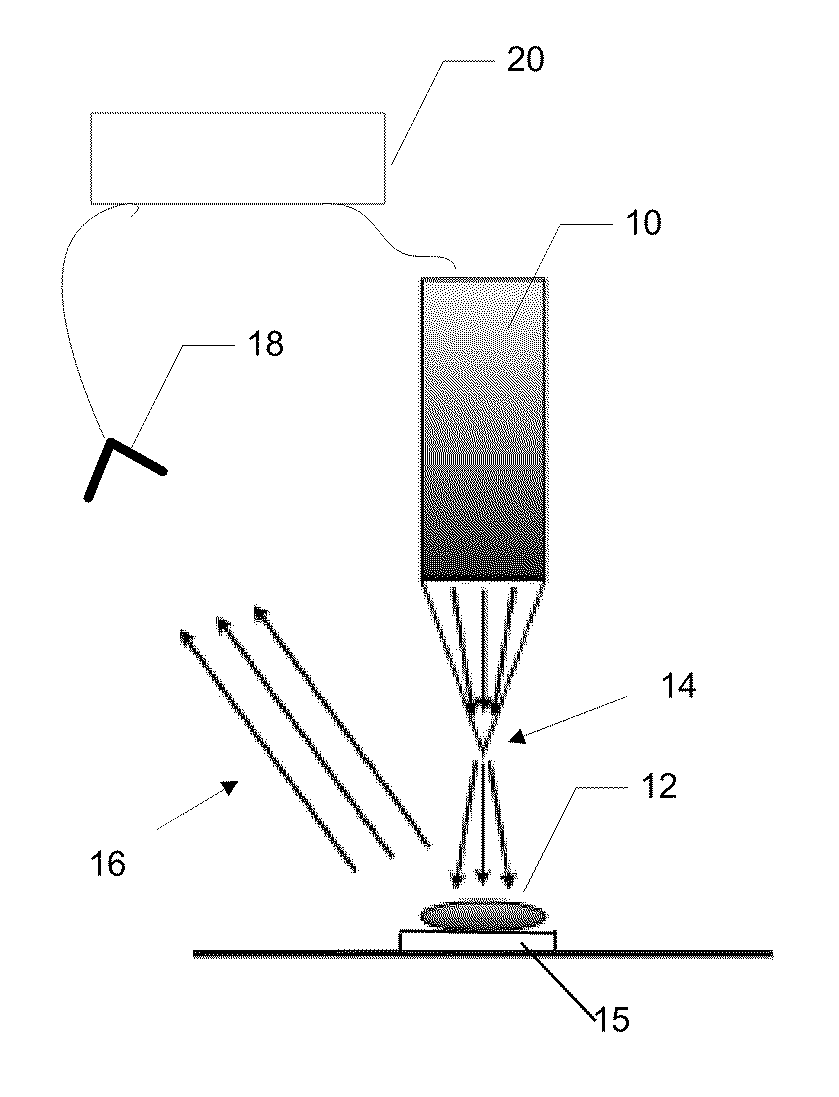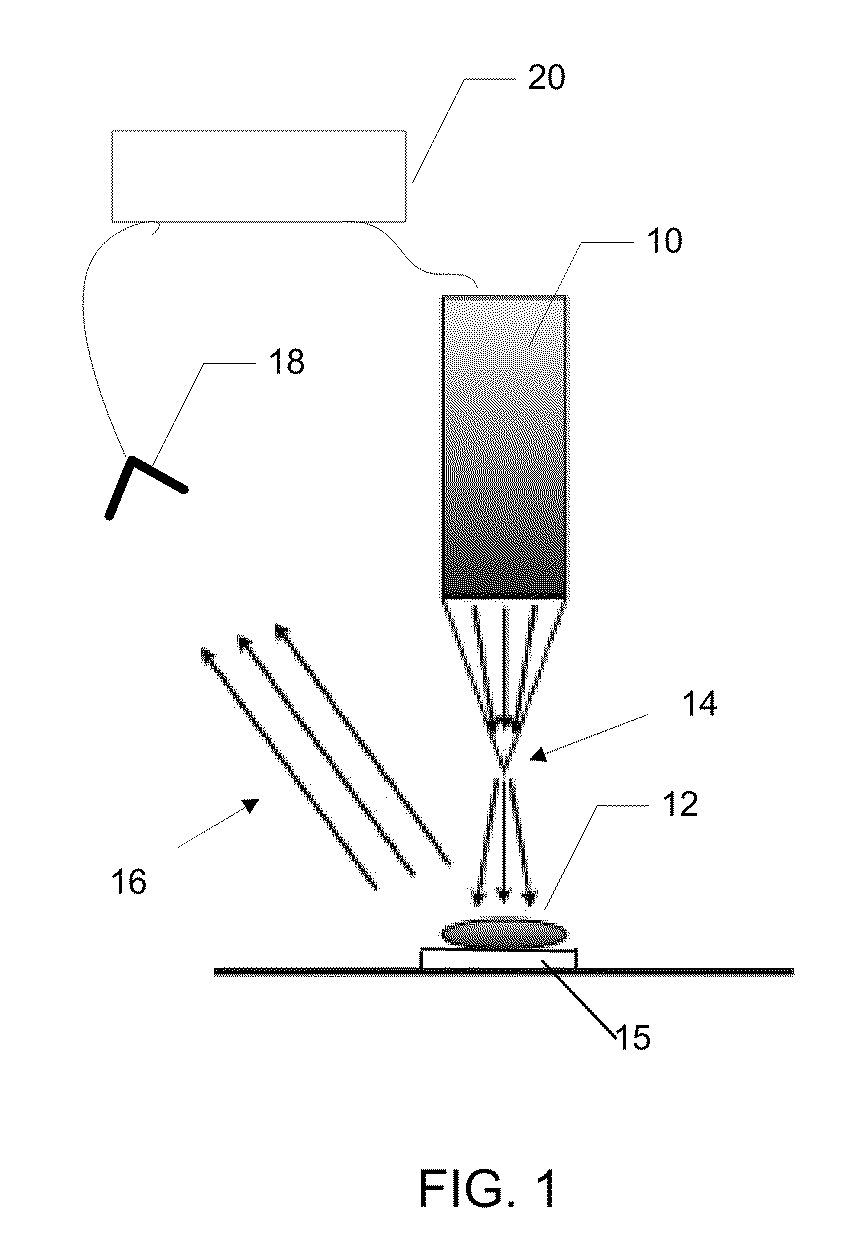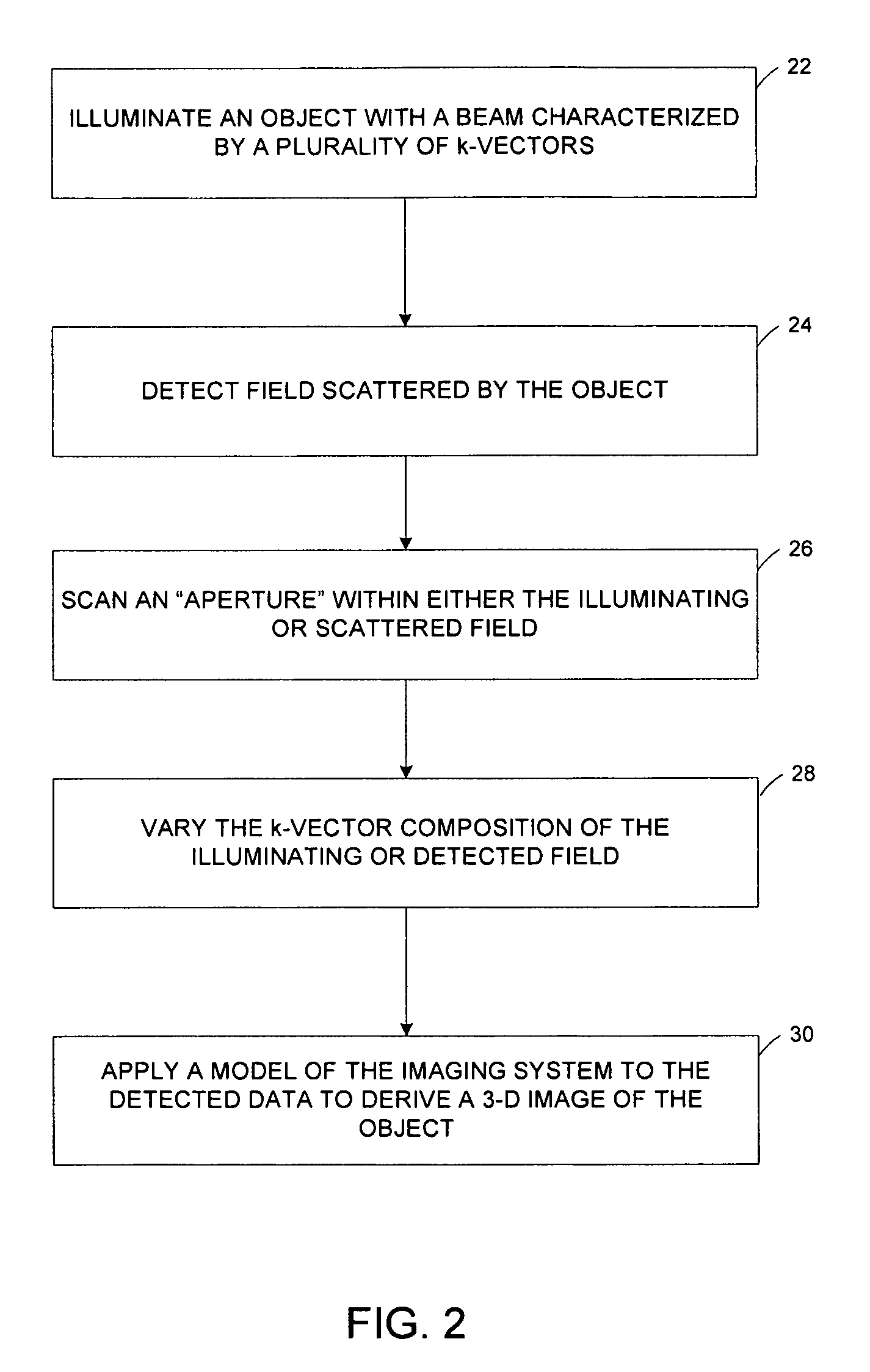Spectral near-field optical tomography
a near-field optical and tomography technology, applied in the field of imaging methods and apparatuses, can solve the problems of difficult to establish a relationship between the data obtained and the physical properties of the sample, the two-dimensional imaging is less than optimal, and the collection of data suitable for nsot processing becomes increasingly difficul
- Summary
- Abstract
- Description
- Claims
- Application Information
AI Technical Summary
Problems solved by technology
Method used
Image
Examples
Embodiment Construction
[0038]Near-field scanning optical tomography (NSOT), an extension of NSOM, amounts to inverting the data collected by NSOM and reconstructing the sample, instead of taking the raw data as an image of the sample. In accordance with preferred embodiments of the present invention, a novel NSOT modality is described. Rather than using multiple observation angles or multiple probes, data are collected in a third dimension by using the spectral degree of freedom. The idea of constructing an image in N spatial dimensions by collecting data in (N−1) spatial dimensions and a spectral dimension has found application in conventional far-field techniques such as optical coherence tomography, described by Schmitt, IEEE J. Sel. Top. in Quant. Electronics, vol. 5, p. 1205, (1999) and synthetic aperture radar, described by Curlander et al., Synthetic Aperture Radar: Systems and Signal Processing, Wiley Interscience, (1991). Multiple images corresponding to different wavelengths can be collected fro...
PUM
| Property | Measurement | Unit |
|---|---|---|
| wavelength | aaaaa | aaaaa |
| observing angles | aaaaa | aaaaa |
| characterizing wavelength | aaaaa | aaaaa |
Abstract
Description
Claims
Application Information
 Login to View More
Login to View More - R&D
- Intellectual Property
- Life Sciences
- Materials
- Tech Scout
- Unparalleled Data Quality
- Higher Quality Content
- 60% Fewer Hallucinations
Browse by: Latest US Patents, China's latest patents, Technical Efficacy Thesaurus, Application Domain, Technology Topic, Popular Technical Reports.
© 2025 PatSnap. All rights reserved.Legal|Privacy policy|Modern Slavery Act Transparency Statement|Sitemap|About US| Contact US: help@patsnap.com



